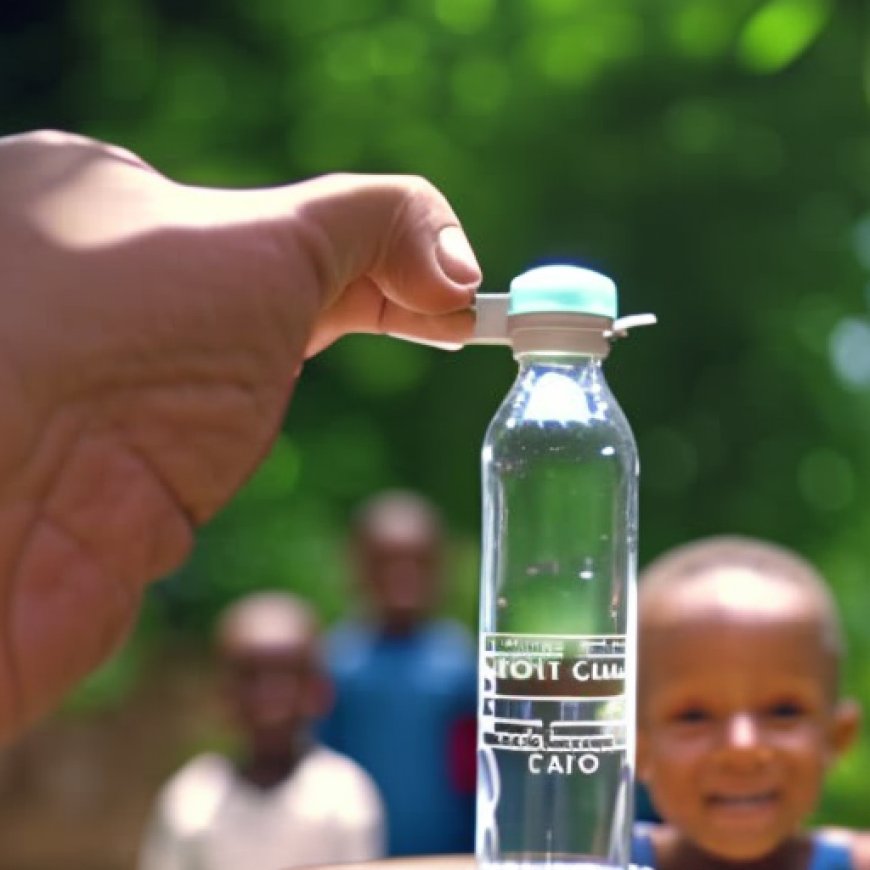UNICEF finds solutions to provide safe water to children no matter where they live
UNICEF finds solutions to provide safe water to children no matter ... UNICEF


Addressing Water Scarcity through Technology

Since 2015, UNICEF and its partners have been actively working towards addressing water scarcity in various regions. One of the strategies employed has been the drilling of more than 685 boreholes across the country. However, it has been observed that some of these wells have not yielded the expected results due to factors such as overexploitation, droughts, and salinization, resulting in insufficient or unsafe water for use.
Monitoring Groundwater Quality and Level
In response to these challenges, UNICEF and its partners have implemented a technology-based solution in southern, eastern, and south-eastern Madagascar. Devices have been installed in the boreholes to measure the quality and level of groundwater. These devices transmit information on water level, salinity, and temperature to a public information system, which regularly publishes online bulletins. Additionally, the system sends automatic alerts when the water reaches critically low levels.
Avoiding Overconsumption
The monitoring of water quality and level in these boreholes serves several purposes. Firstly, it enables communities to avoid overconsumption during dry months by providing them with real-time information on water availability. Furthermore, it allows communities to track water levels throughout the year and anticipate potential well drying. In such cases, early action can be taken to limit groundwater extraction and recharge the aquifer through the construction of dams. Franklin Golay, Technical Officer at UNICEF Supply Division’s Water, Sanitation, and Education Centre, emphasizes the importance of this approach in ensuring sustainable water management.
Expanding the Programme
UNICEF plans to install similar monitoring systems in 50 additional boreholes across Madagascar. Furthermore, the organization is exploring opportunities to expand this programme to other countries facing similar water scarcity challenges. Sudan, Afghanistan, and Pakistan are among the countries where UNICEF’s technical specifications are guiding the acquisition of necessary equipment for implementing similar projects.
SDGs, Targets, and Indicators
1. SDGs Addressed or Connected to the Issues Highlighted in the Article:
- SDG 6: Clean Water and Sanitation
- SDG 13: Climate Action
- SDG 17: Partnerships for the Goals
2. Specific Targets Based on the Article’s Content:
- Target 6.1: By 2030, achieve universal and equitable access to safe and affordable drinking water for all.
- Target 6.4: By 2030, substantially increase water-use efficiency across all sectors and ensure sustainable withdrawals and supply of freshwater to address water scarcity.
- Target 13.1: Strengthen resilience and adaptive capacity to climate-related hazards and natural disasters in all countries.
- Target 17.16: Enhance the global partnership for sustainable development, complemented by multi-stakeholder partnerships that mobilize and share knowledge, expertise, technology, and financial resources.
3. Indicators Mentioned or Implied in the Article:
- Indicator 6.1.1: Proportion of population using safely managed drinking water services.
- Indicator 6.4.2: Level of water stress: freshwater withdrawal as a proportion of available freshwater resources.
- Indicator 13.1.1: Number of deaths, missing persons, and directly affected persons attributed to disasters per 100,000 population.
- No specific indicator mentioned for Target 17.16, but it can be measured through the establishment and progress of partnerships and collaborations between UNICEF and other organizations.
Table: SDGs, Targets, and Indicators
| SDGs | Targets | Indicators |
|---|---|---|
| SDG 6: Clean Water and Sanitation | Target 6.1: By 2030, achieve universal and equitable access to safe and affordable drinking water for all. | Indicator 6.1.1: Proportion of population using safely managed drinking water services. |
| SDG 13: Climate Action | Target 6.4: By 2030, substantially increase water-use efficiency across all sectors and ensure sustainable withdrawals and supply of freshwater to address water scarcity. | Indicator 6.4.2: Level of water stress: freshwater withdrawal as a proportion of available freshwater resources. |
| Target 13.1: Strengthen resilience and adaptive capacity to climate-related hazards and natural disasters in all countries. | Indicator 13.1.1: Number of deaths, missing persons, and directly affected persons attributed to disasters per 100,000 population. | |
| SDG 17: Partnerships for the Goals | Target 17.16: Enhance the global partnership for sustainable development, complemented by multi-stakeholder partnerships that mobilize and share knowledge, expertise, technology, and financial resources. | No specific indicator mentioned, but can be measured through the establishment and progress of partnerships and collaborations. |
Behold! This splendid article springs forth from the wellspring of knowledge, shaped by a wondrous proprietary AI technology that delved into a vast ocean of data, illuminating the path towards the Sustainable Development Goals. Remember that all rights are reserved by SDG Investors LLC, empowering us to champion progress together.
Source: unicef.org

Join us, as fellow seekers of change, on a transformative journey at https://sdgtalks.ai/welcome, where you can become a member and actively contribute to shaping a brighter future.







